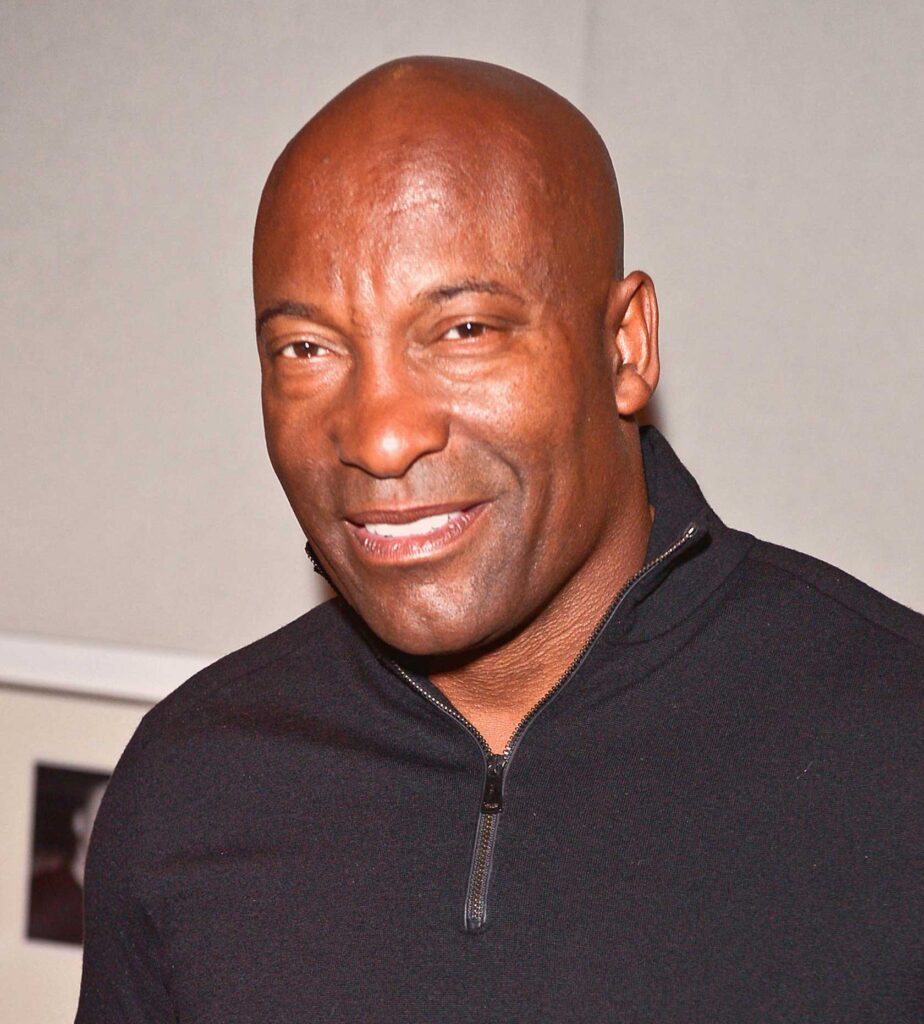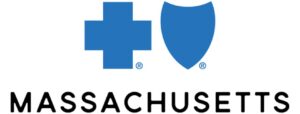
Health information brought to you by
Blue Cross Blue Shield of Massachusetts

It’s unfortunate that this line written by Oscar nominated writer and director of the “Boyz in the Hood”, is a reality for so many United States (U.S.) adults. But for over 50% of African American men and women this is not a movie, it’s real life. John Singleton, the famed director succumbed to the complications of high blood pressure and died from a massive stroke, he was only 51 years old. Too many people in communities of color do not know they have high blood pressure, also called hypertension. Singleton was the first African American and youngest filmmaker to be nominated for an Academy Award for best director. He had so much more to contribute; his early death could have been prevented.
We want to help you to understand hypertension and what can be done to manage or prevent it for yourself and your family. Hypertension is a chronic disorder of consistent high blood pressure with ranges above normal (see chart). The Center for Disease Control (CDC) states an astounding statistic, that half of all United States (U.S.) adults have high blood pressure. Only 1 in 4 adults have high blood pressure under control. This means 3 in 4 U.S. adults with high blood pressure or a staggering 75% do not have it under control. Could that be you? Maybe you don’t even know.
High blood pressure develops and increases slowly over time; the signs and symptoms that would get your attention do not occur until blood pressure ranges are extreme, possibly resulting in hospitalization and/or death; this is why it’s often referred to as the silent killer. “You can’t feel your blood pressure, so you really need to have it checked,” states Dr. Mark Friedberg, an internal medicine physician at Mass General Hospital and Senior Vice President of Performance Measurement and Improvement at Blue Cross Blue Shield of Massachusetts. However some people whose blood pressure is extremely high may experience symptoms such as severe headaches, chest pain, dizziness, difficulty breathing, nausea, confusion, buzzing in the ears, nosebleeds or other symptoms. Over time, high blood pressure can cause damage to your heart, brain and kidneys. In 2021, the CDC stated that over 691,000 deaths in the U.S. were primarily caused by hypertension (high blood pressure) or its complications. These numbers emphasize high blood pressure is truly a silent public health crisis.
What is blood pressure?
Each time your heart beats, it pumps blood throughout your body and through your arteries. The pressure your blood puts on the arteries while circulating in the body is your blood pressure.
How can you find out what your blood pressure numbers are?
It is a routine and painless measurement collected during a doctor’s visit. Your local pharmacy can also measure your blood pressure. According to Dr. Friedberg, “The best way to prevent problems is to make sure your blood pressure is checked regularly (at least once a year) by a medical professional. It’s important!”
How is it measured?
When you have your blood pressure checked, the results will include two numbers. The top number is your systolic pressure, the pressure your heart exerts while pumping blood. The bottom number is your diastolic pressure, the pressure your heart exerts when at rest between beats. Blood pressure is measured using both numbers, the systolic pressure followed by the diastolic pressure measured in units of milliliters of mercury (mm Hg).
What is normal blood pressure?
According to the American College of Cardiology and American Heart Association (AHA) if the first number called systolic blood pressure is less than 120 mm Hg, and the second number called diastolic blood pressure: is less than 80 mm Hg, that is considered a normal blood pressure. Each time you have your blood pressure checked, the results will include two numbers and your numbers will fall into one of these categories. For example, 112/73 mm Hg or “112 over 73” is considered a normal blood pressure.
What if it is higher?
The first stage of hypertension starts when the first number systolic is between 130-139, and/or the second number diastolic, is between 80-89. The second stage of hypertension is indicated when the first number systolic is 140 or higher and/or when the second number diastolic is 90 or higher.
Importantly, both the CDC and the AHA report the rate of hypertension as higher in non-Hispanic black adults (56%) than in non-Hispanic white adults (48%), Asian adults (46%), or Hispanic adults (39%). Black people develop hypertension earlier in life and have higher rates of more severe high blood pressure ranges than other ethnic groups.

Dr. Ruth-Alma Turkson-Orcan, Nurse Practitioner and Researcher, Beth Israel Deaconess Medical Centers
The good news is that high blood pressure can be prevented, managed and controlled. There are many initiatives to help people with an early hypertension diagnosis as well as those individuals who struggle to control more acute high blood pressure. Dr. Ruth-Alma Turkson-Orcan, Nurse Practitioner and Researcher with the Beth Israel Deaconess Medical Centers encourages people to reframe how we think and talk about hypertension. “Think of it more as a management versus a treatment or cure…sticking with the meds, checking blood pressures at home is really the key to getting to the numbers at your target goal along with your provider.”
It’s important to recognize the risk factors that impact you in order to address the ones that can be controlled and be mindful about those you cannot. This is especially important for individuals with families and teaching them preventative habits, early.
What are the risk factors for hypertension?
There are two kinds, 1) risk factors that are beyond your control and 2) risk factors that can be controlled to help mitigate the severity or possibly even prevent hypertension.
1. There are fixed risk factors that you cannot change or control, but should be aware of.
• Family history
According to Dr.Friedberg, “If your parents had high blood pressure, there’s a good chance you might get it,” he said. “Most patients require medication, and it’s not because of anything they did or didn’t do. People shouldn’t feel guilty or ashamed about having high blood pressure.”
• Age
The older we get the less elastic and flexible our blood vessels become making the pressure of the blood pumping more intense.
• Gender
Men are more likely to develop high blood pressure in their early years, before age 60. Women are more likely to develop high blood pressure later, age 60 and older due to hormonal decreases in estrogen from menopause.
• Race
African Americans not only have higher incidence rates of high blood pressure among all ethnic groups, they have a higher rate of the severity. It is not because someone is Black or Hispanic alone that they are at higher risk for high blood pressure, but other systemic factors like structural racism that contribute to this health inequity.
2. There are several risk factor areas where you can work to control high blood pressure and create better habits for yourself. And, possibly even prevent high blood pressure from starting.
• Diet
A focus on making healthy food choices can be a powerful first step to managing high blood pressure. Reduce salt and sugar from your diet. People who suffer from diabetes are also at a higher risk for high blood pressure. 12% of African Americans have diabetes, a chronic health condition that requires close monitoring. Diabetes directly affects how the body can successfully convert food into energy. If your body does not have enough energy, it affects how your body functions including major organs like the heart, brain and kidneys.
• Alcohol consumption
Regular use of alcohol can lead to high blood pressure. The American Heart Association (AHA) recommends that if you do consume alcohol that you do so responsibly. Alcohol consumption increases dehydration a major contributor to elevated blood pressure. The CDC recommends increasing water consumption instead. People with high blood pressure should attempt to drink 8 – 15 cups of water per day, based upon their thirst.
• Cholesterol
It’s important to note more than half of adults with high blood pressure have high (LDL) cholesterol. Having too much cholesterol can create plaque in your arteries causing arteries to become stiff and narrow, increasing your blood pressure. 60% of individuals with high blood pressure also have high cholesterol. Your cholesterol levels can be managed with vigilance and support from your medical team.
• Exercise
Daily activity is recommended. Walking and/or taking classes at your local gym, local Y, or utilizing other fitness centers will prevent large fluctuations in weight. Preventing obesity is crucial. Review your health insurance coverage policy as many insurers offer incentives and discounts. Health insurance plans like those offered by Blue Cross Blue Shield of Massachusetts have made it a priority to promote health and wellness. In fact, yearly wellness visits are covered at $0 cost, these include routine screenings for many chronic illnesses like high blood pressure. Many of their members are eligible up to $300 in fitness and weight-loss reimbursements including health club membership and classes with weight-loss programs like WW (formerly known as Weight Watchers®) to name a few. Check your health insurance to review your benefits.
In support of the broader community, Blue Cross has served as Bluebikes’ title sponsor, since May 2018, helping to enhance access to the public bike share system in Greater Boston that serves as a safe and sustainable public transportation option and also helps communities stay active in an affordable way.
• Tobacco
Smoking/vaping consumption damages and weakens blood vessels. It not only greatly increases your risk of high blood pressure but also heart disease: like a heart attack and stroke.
• Stress
While some moderate stress is ok, too much stress can increase blood pressure. The ability to negotiate stress positively directly affects our health outcomes. Our bodies physically respond to short-lived stress with an increase in heart rate, constriction of blood vessels and a temporary increase in blood pressure. However, chronic stress or long-term stress affects the physical and mental body. The path to reducing stress whether short-term or chronic is stress management. Dr. Leonor Fernandez, Health Equity Medical Director at Beth Israel Lahey Health (BILH) agrees, “we live in a stressful world.” Physical exercise and staying socially connected to friends and family helps. Building a resilient mind is the foundation to creating a healthier body.
A Call To Action
In 2020, then U.S. Surgeon General, Dr. Jerome Adams issued a call to action by highlighting hypertension as public health crisis. Dr. Adams advocated to take a team approach, provider, community and patient all working together.

Cecilia Flores-Rodríguez, PhD ,
Senior Program Manager for Provider Performance and Equity, Blue Cross Blue Shield of Massachusetts
Blue Cross is answering that call to action. For Cecilia Flores-Rodríguez, PhD, Senior Program Manager for Provider Performance and Equity, “Blue Cross takes pride in its deep commitment to address health equity through its collaborative partnership with provider organizations as they implement hypertension initiatives to improve patient outcomes.”
This commitment led Blue Cross to set up a collaboration with health care provider groups Equity Action Community (EAC) to address health equity and improve patient health through a team approach as recommended by former U.S. Surgeon General Adams. Provider organizations in the EAC have been able to spot inequities in health outcomes, like high blood pressure, and then move to identify the root causes of the problem. Dr Elizabeth Molina Ortiz, internist and Chair of Atrius Health Equity committee said, “We identified a persistent trend of our White patients reaching their blood pressure goals at a higher percentage than our Black patients.” Atrius Health would not have known this trend without racial and ethnicity demographic information about their patients. This sentiment is echoed by Dr. Fernandez who talks passionately about the relationship between primary care provider and patient. Primary care providers are by no means perfect, but equity champion Dr. Fernandez is clear that training doctors to have an “alertness of the physical and spiritual presence of their patients in the room” is powerful. While this relationship is foundational to our health care systems it requires the whole team; nurses, clinicians, and front desk staff to build relationships of trust. Coupled with the power of data, Dr. Fernandez further explains these metrics help her team look at patient populations not only by race and ethnicity but also by language, and zip codes “these results help us understand where we are doing well, and where we are not doing well.” Their team has also been able to distribute blood pressure cuffs to patients along with proper training so that they may have more autonomy in their care.
Similarly, data allowed Atrius, with the support of Blue Cross, to meet individualized patient needs with game changing interventions like telehealth appointments to eliminate transportation challenges and providing blood pressure cuffs for use at home for their uncontrolled high blood pressure patients.
We can all start to take control of high blood pressure by working with our doctors and clinicians. Contact your health insurance provider — research and know your benefits and/or reimbursements to take classes for nutrition, weight loss, and to stay active. Find out what resources they offer for prevention and/or treatment, for example you can use a blood pressure cuff at home to monitor your own blood pressure; some physicians can track your blood pressure numbers electronically through technology. You can also measure your blood pressure regularly at a local pharmacy. Stay connected and collaborate with your doctor around medication usage. Patient involvement in a partnership with their health care providers translates to positive health outcomes. Dr Leonor Fernandez, Health Equity Medical Director at BILH enthusiastically shares that “treatment of hypertension is a success story … if we are able to engage our patients.”
John Singleton’s family wished he did not secretly struggle with hypertension. They wished, just like the characters he brought to life on screen, that he would have chosen to live differently. While the numbers let us know that hypertension is a reality for most African Americans, the use of blood pressure cuffs at home, medications, and effective partnerships with trusted physicians will save lives.








